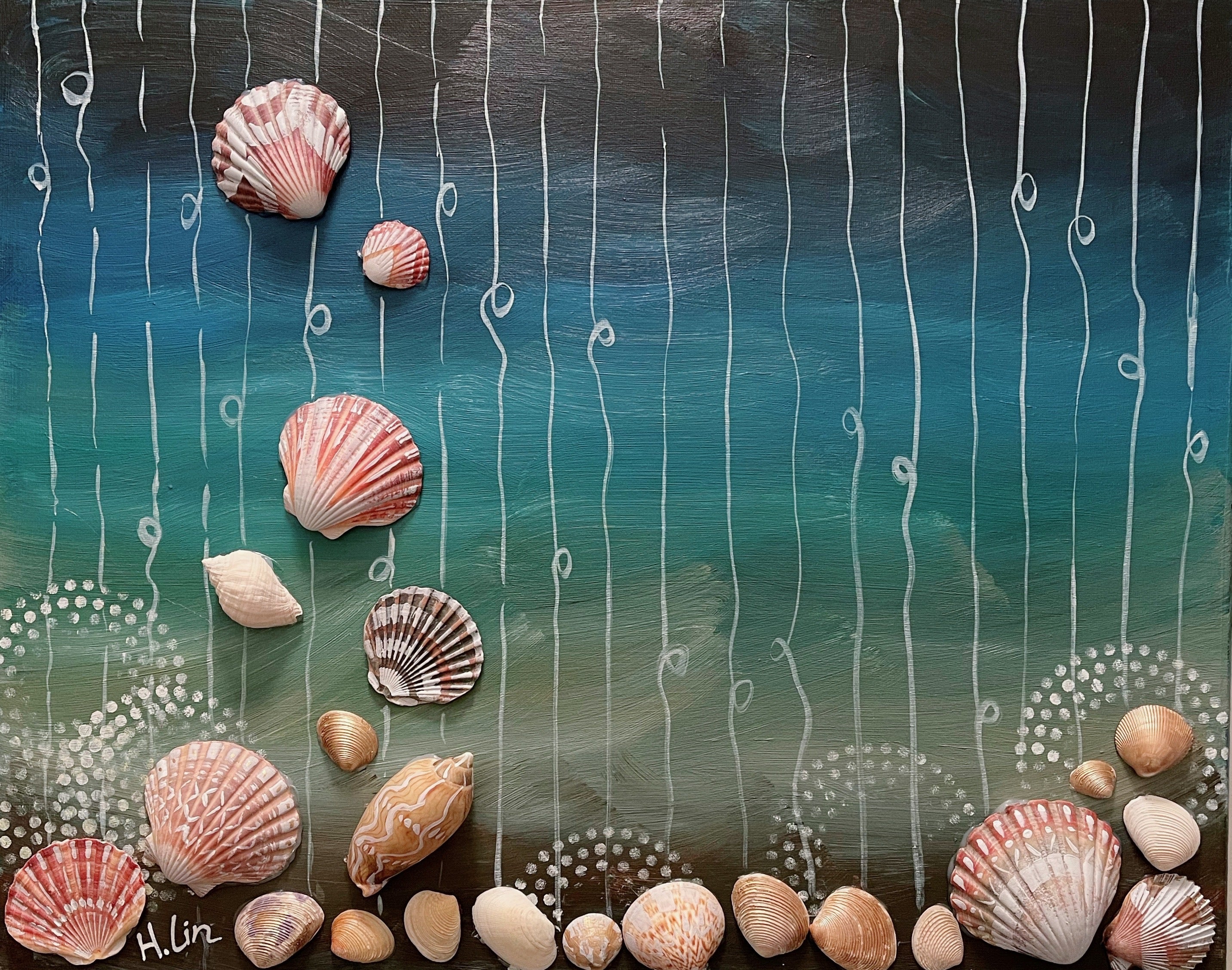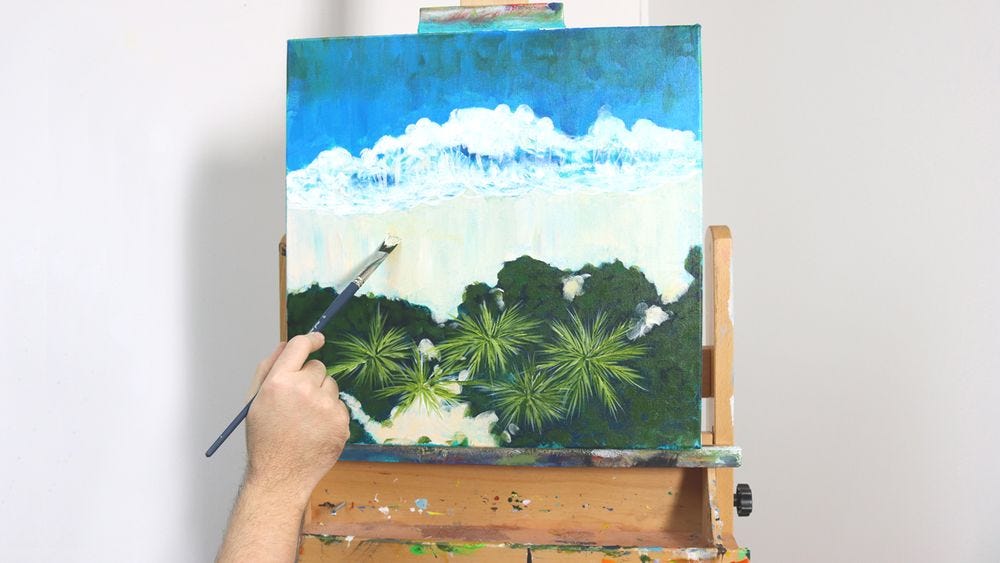Create a textured beach painting
Print out the reference sheet on our website and draw up the grid with a charcoal pencil. Then, draw in the 3 waves with equal spacing.
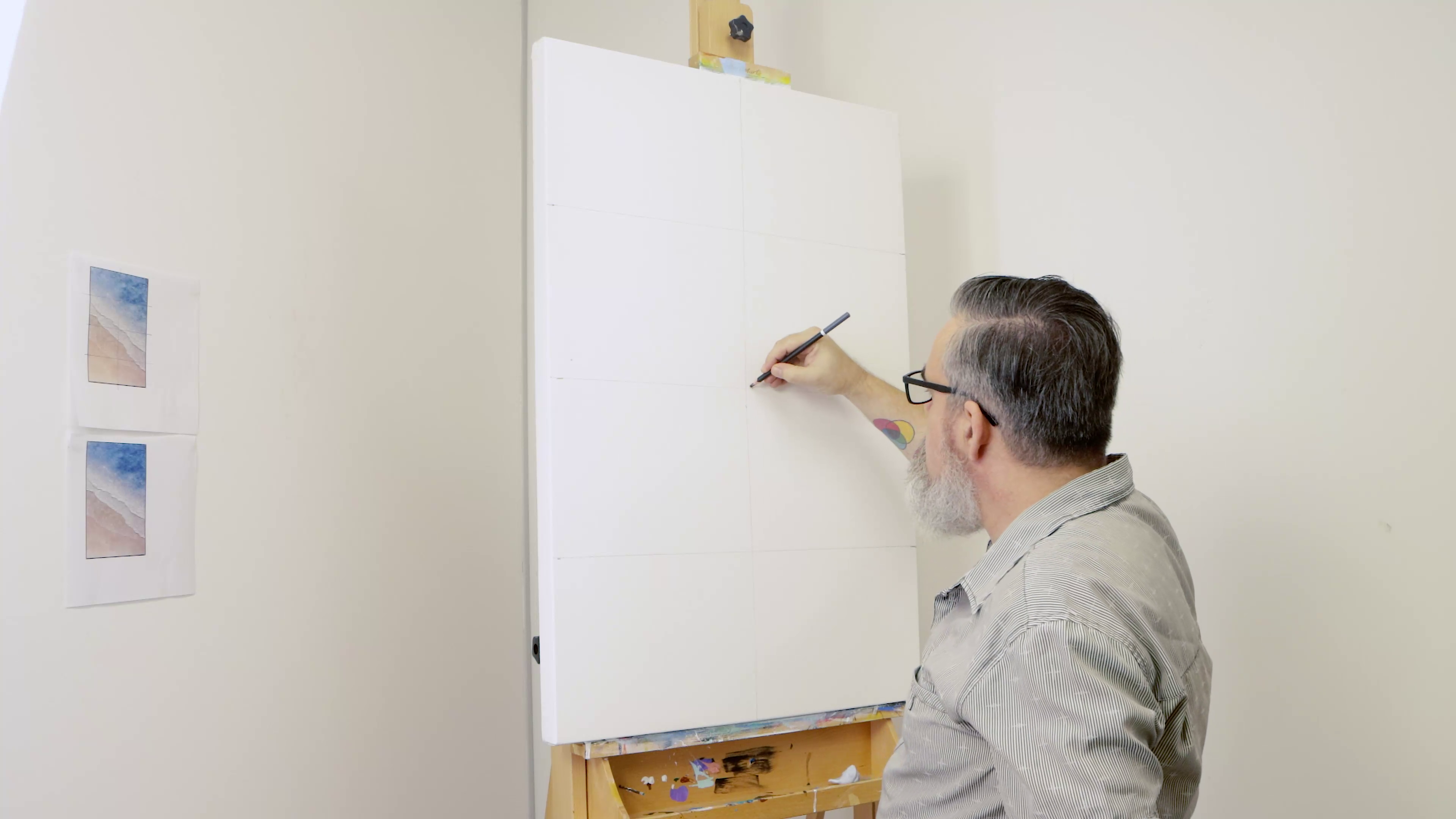
Once the charcoal marks are removed, apply the waves with modelling paste.
As the lowest wave is the is the most shallow, apply a thin layer of modelling paste. Take the paste out to the front of the second wave and thin it out.

The second wave is more substantial. Use the large pallet knife and make sure the paste is concentrated up to the edge line of the wave. If you use light pressure on the tip of the palette knife the paste will form a concave shape, from here you can drag the paste back and smooth it out to the third wave.

The third wave is the largest so even more paste is applied to the edge than the second wave. This can be handled the same way as the second wave. Once the edge of the third wave is in, smooth out paste up to the top of the canvas.
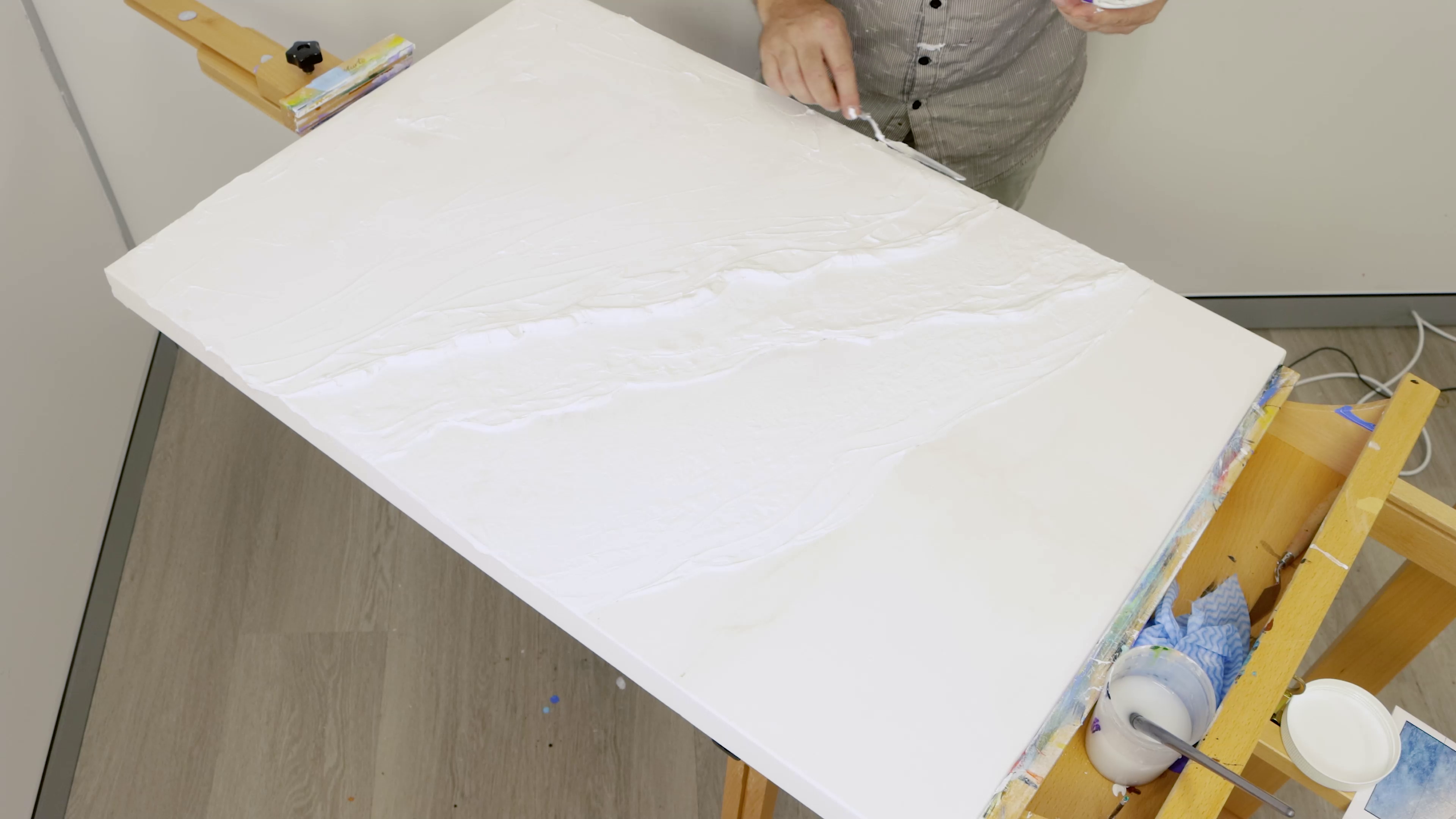
To create texture on the surface to suggest ripples, lightly drag a paint brush back and forth across the paste. Once you are happy with the effect, give it some time for the modelling paste to become touch dry.
Once its touch dry, mix some PVA glue with water. Approximately 50% water and 50% PVA glue. Sprinkle some sand over the glue and let this dry.

Now you can apply some paint! First, we mix up a sand colour from Titanium White, Yellow Ochre and a touch of Yellow Pink Satin Series Acrylic Paint. Give this a rough mix and apply it over the sand using the Artist Acrylic Brush Premium Taklon Flat Wide 50mm. Once the sand is covered, we take the colour into the first wave. We will be covering this with paint in a later stage but the water is very shallow here so the colour of the sand would be visible.
Add some of this mix into the second and third wave also.
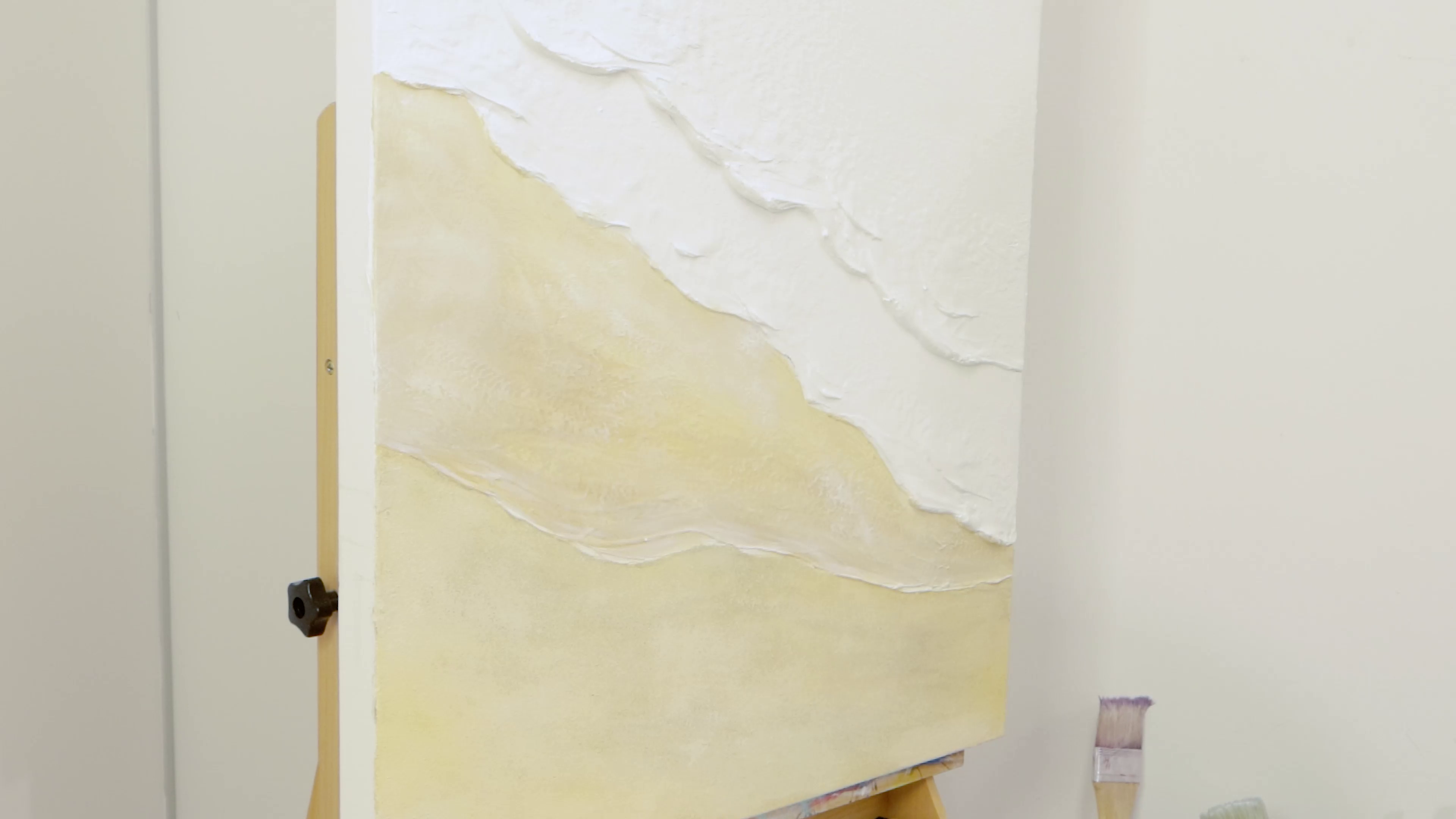
Next, mix some Titanium White and Lamp Black into the beige mix that we used for the sand to create a warm grey and paint this into the second and third wave.

To create a rich blue for the ocean, paint Phthalo Blue mixed with Gloss Medium into the top of the canvas. Mix more medium into the mix as we move down the canvas toward the wave until it blends out into nothing. Lay this colour into the other 2 waves but make sure there is only a touch of Phthalo in the mix, so the blue is very light.
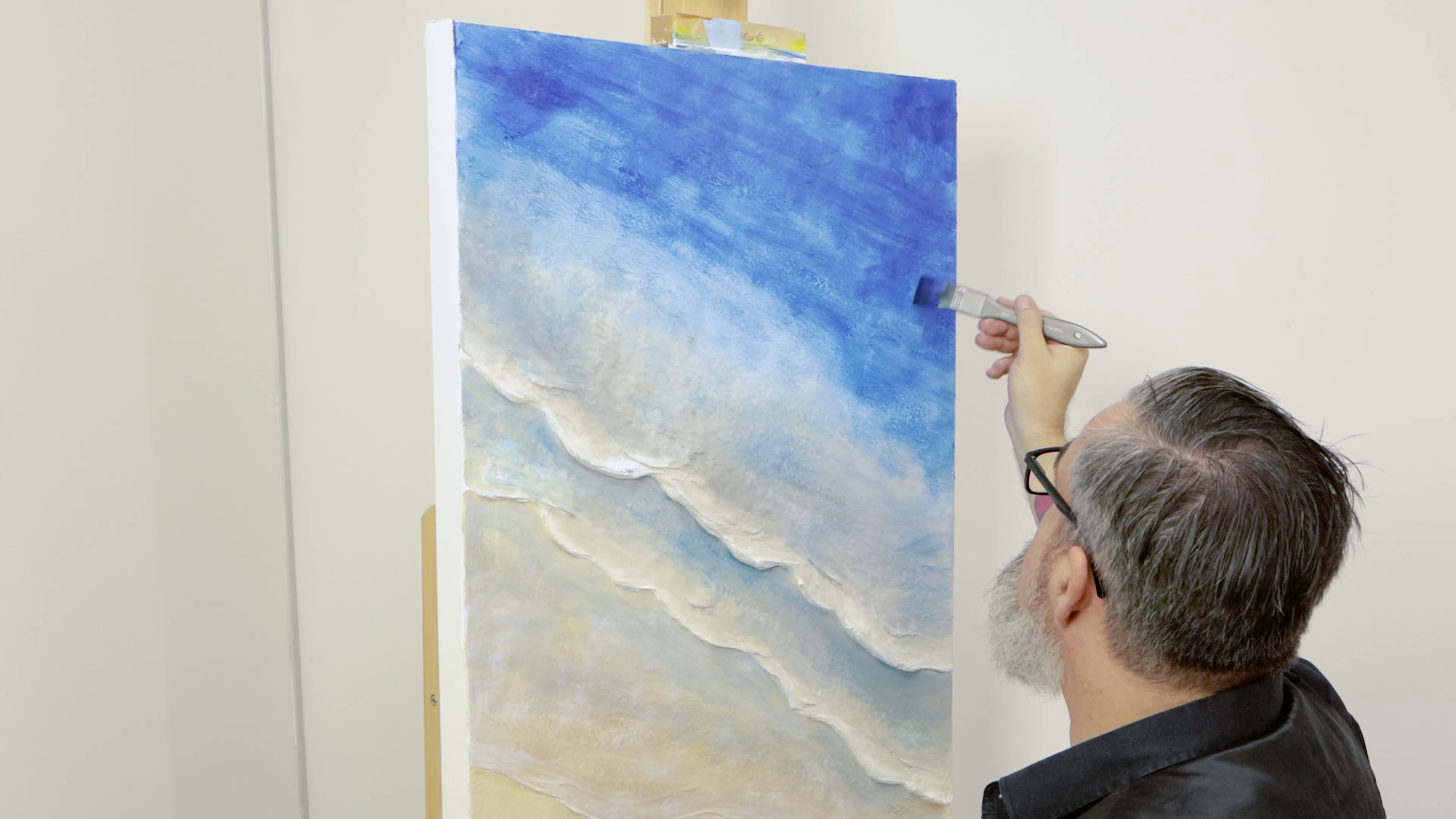
Then, add some Chinese White to the front of the waves and blend this out int to the blue behind the waves. Chinese White is more translucent than Titanium White so the underlying colour can be seen to an extent.

To give the blue of the ocean more depth, scumble Phthalo Blue mixed with a little Titanium White over the layer of Phthalo blue.

Then, apply Titanium White onto the front of the waves and blend this out. To create highlights on the ripples, the flat part of the brush can be used to create lines behind the waves. Another technique is to lightly drag a charged brush over the surface of the painting.

And with that our textured beach scene is complete and ready to hang and brighten up any room.
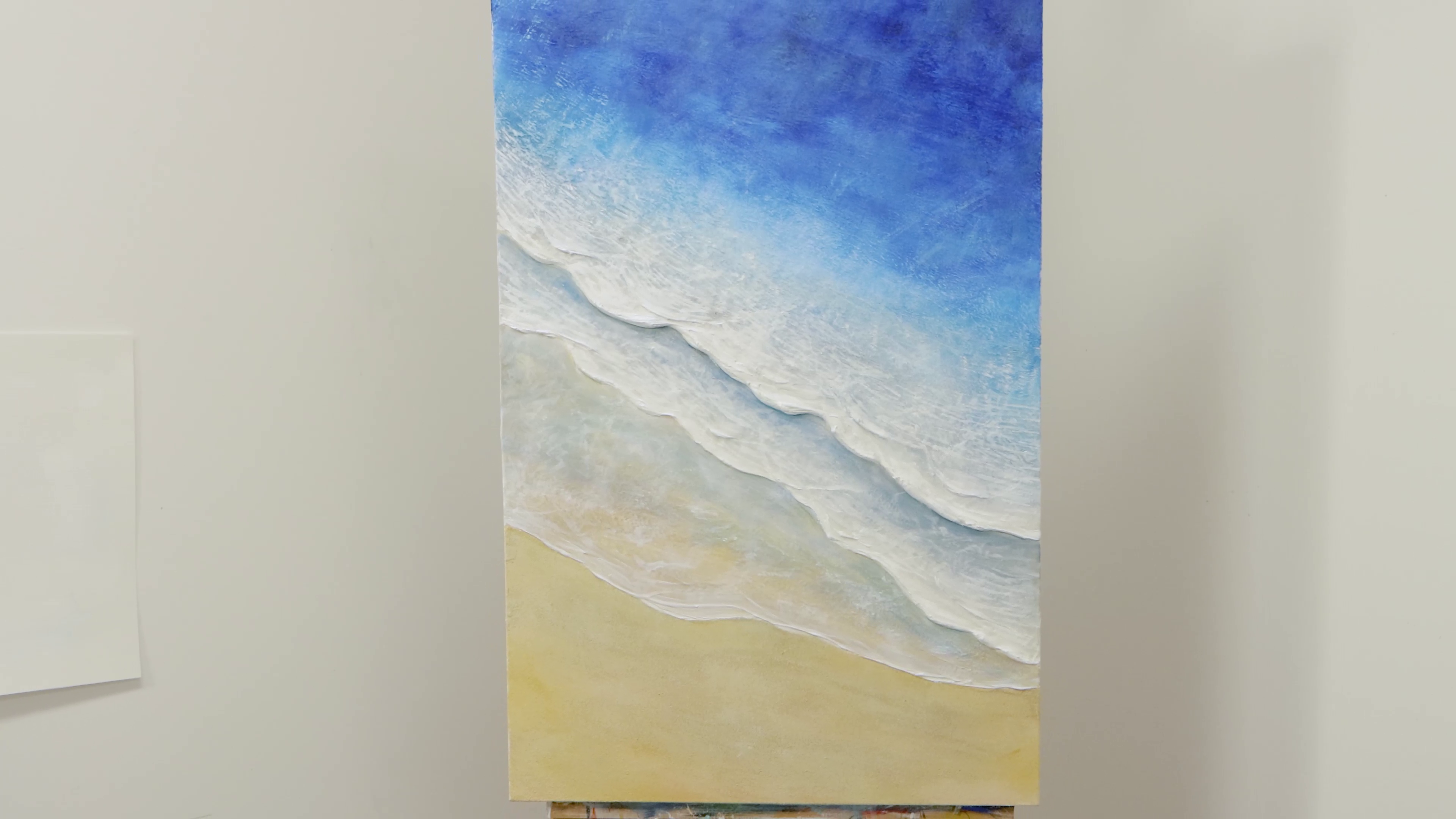
- CSDT6090 Double Thick Canvas Signature 60.9 x 91.4cm (24 x 36in): https://www.montmarte.com/products/double-thick-canvas-signature-60-9-x-91-4cm-24-x-36in?variant=40820440694923
- MPB0055 Artist Acrylic Brush Premium Taklon Flat Wide 50mm (1.98in): https://www.montmarte.com/products/artist-acrylic-brush-premium-taklon-flat-wide-50mm-1-98in?variant=40820382498955
- MAPK0004 Large Palette Knife Signature No. 10: https://www.montmarte.com/products/large-palette-knife-signature-no-10?variant=40820435353739
- MPA0041 Modelling Paste Premium 500ml (16.9oz): https://www.montmarte.com/products/modelling-paste-premium-500ml-16-9oz?variant=40820384235659
- MAMD0012 Acrylic Medium Gloss Premium 250ml (8.5 US fl.oz): https://www.montmarte.com/products/acrylic-medium-gloss-premium-250ml-8-5-us-fl-oz?variant=40820436926603
- PMSA7501 Satin Acrylic Paint Premium 75ml (2.5 US fl.oz) Tube - Titanium White: https://www.montmarte.com/products/satin-acrylic-paint-premium-75ml-2-5-us-fl-oz-tube-titanium-white?variant=40820310507659
- PMSA7502 Satin Acrylic Paint Premium 75ml (2.5 US fl.oz) Tube - Chinese White: https://www.montmarte.com/products/satin-acrylic-paint-premium-75ml-2-5-us-fl-oz-tube-chinese-white
- PMSA7525 Satin Acrylic Paint Premium 75ml (2.5 US fl.oz) Tube - Yellow Ochre: https://www.montmarte.com/products/satin-acrylic-paint-premium-75ml-2-5-us-fl-oz-tube-yellow-ochre
- PMSA7505 Satin Acrylic Paint Premium 75ml (2.5 US fl.oz) Tube - Yellow Pink: https://www.montmarte.com/products/satin-acrylic-paint-premium-75ml-2-5-us-fl-oz-tube-yellow-pink
- PMSA7515 Satin Acrylic Paint Premium 75ml (2.5 US fl.oz) Tube - Phthalo Blue: https://www.montmarte.com/products/satin-acrylic-paint-premium-75ml-2-5-us-fl-oz-tube-phthalo-blue
- PMSA7530 Satin Acrylic Paint Premium 75ml (2.5 US fl.oz) Tube - Lamp Black: https://www.montmarte.com/products/satin-acrylic-paint-premium-75ml-2-5-us-fl-oz-tube-lamp-black
- MCG0022 Tear-off Paper Palette Signature 50gsm 36 Sheet: https://www.montmarte.com/products/tear-off-paper-palette-signature-50gsm-36-sheet?variant=40820430798987
- MACR0034 PVA Craft Glue Signature 40g: https://www.montmarte.com/products/pva-craft-glue-signature-40g?variant=40820437680267
- Sand



























